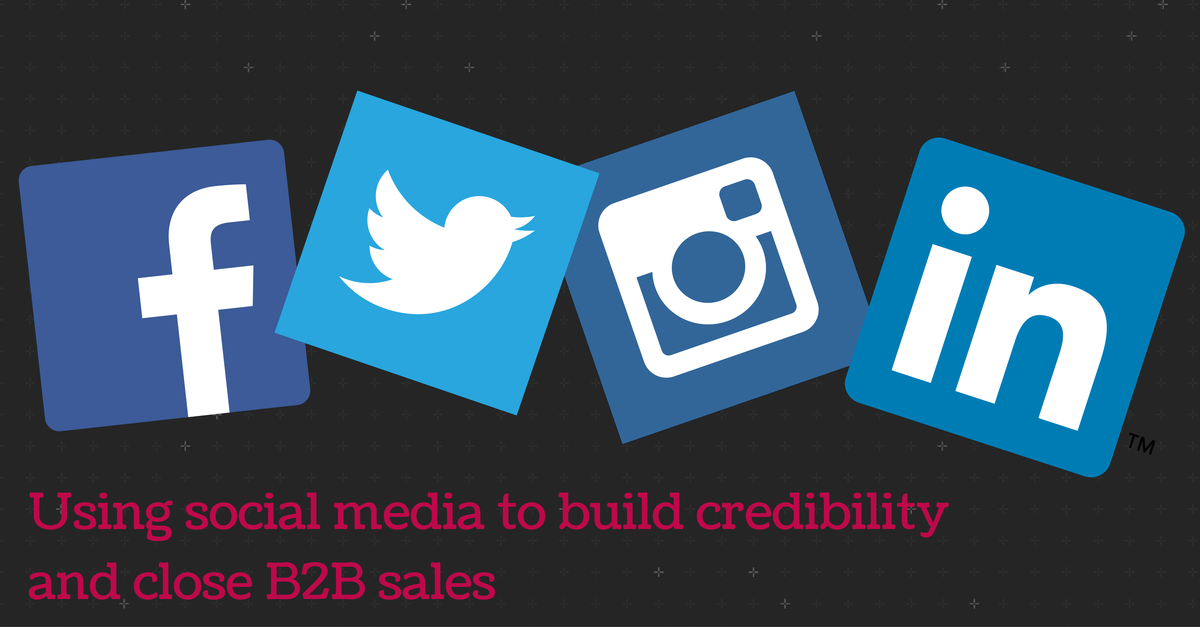
"Social media marketing isn't relevant for our industry" is probably the single biggest objection I have heard from owners, marketing directors and sales directors within B2B companies. Invariably though, they have never even tried it and when pressed for data to support their claim they provide anecdotal evidence about how their friends and colleagues don't use Facebook. Good for them.
Claiming that social media doesn't work for any business is like claiming the mobile telephone doesn't serve a purpose within a business. Social media is merely another way to communicate and assuming that there are industry related conversations taking place online, it's safe to say social media will help a B2B company.
Here is the guide to using social media to build credibility in your industry.
Step 1: Schedule updates
If you're not visible on social media, you're never going to be able to build credibility. To keep things simple you should first of all start sharing content that is relevant to your industry. Share blog posts, YouTube videos, news stories or anything else you find in order to demonstrate your knowledge and interest in the industry.
Sales is a demanding job and there isn't a great deal of free time for sales people in the offices I go into. Therefore sharing industry news and articles across your social media profiles has to be done quickly and efficiently. This requires some scheduling in advance.
How do I do it?
Spend thirty minutes per week finding five or six pieces of content and schedule them to be shared at different intervals throughout the week.
What tools should I use?
Buffer
Buffer is a handy tool that allows you to add social media updates to a "buffer" which will drip feed your content throughout the day or week. Buffer works with Facebook, Twitter, LinkedIn and App.net so it is ideal for those who want to be visible on many social media accounts.
Hootsuite Hootlet
Much like Buffer, Hootsuite's Hootlet browser extension allows users to share content through the click of a button within the browser. Users can then select a time for the update to be shared or they can select the auto-schedule option which optimises your content publishing times based on the historical levels of engagement from your audience.
HubSpot
The latest updates to HubSpot's social media tools are very powerful. Among the toolkit is a bookmarklet that lets you browse the web, find articles you want to share and then schedule them for posting. It supports many networks including LinkedIn company pages which makes it an invaluable tool for sales people who also monitor the company social media profiles.
Step 2: Get involved in the discussion
My experience tells me that no matter what the industry, there is a conversation taking place somewhere online about it. This could be on a LinkedIn group or on a small, niche forum; either way, your peers will be there and discussing the latest trends and developments so you should be there too.
This requires a greater time commitment in order to see some results but the credibility gained through the additional time invested in it will be worthwhile.
How do I do it?
Spend twenty to thirty minutes per day participating in industry discussions. Add value to the forum or group you are on, not by promoting your products but by offering advice and helpful resources that they will find useful.
What tools should I use?
BoardReader
One of the challenges that anyone who wishes to undertake such a level of engagement faces is the first step: finding the conversations. BoardReader is a handy search engine that will bring up conversations from forums and message boards related to your industry keywords. It is great for finding incredibly niche audiences.
LinkedIn Groups
They are a treasure trove of great industry discussions. Admittedly there are some groups where everyone in them is self-promotional and the discussion is limited. However, when you find one that is well moderated and industry specific, you can build credibility by providing genuine insight and ideas to your industry peers.
Quora
It is the destination for Q&As on the 'net. Quora is a place where anyone can ask a question and anyone can provide an answer. You'll find lots of industry discussions taking place on here when you use the search facility so dive in, take part, establish yourself as an industry expert. I once spoke to a US based accountant who gained several new clients simply by being helpful on Quora.
Step 3: Start blogging
There are many reasons to start a blog beyond establishing credibility but this is definitely one for you to consider. A well maintained, regularly updated blog will establish credibility. People will read your content, they will share it, they will take on board what you have to say.
Blogging isn't something that you can simply dip in and out of though. It requires commitment and perseverance to continue adding new content even where old content hasn't worked.
How do I do it?
Decide how often you want to blog. The more you blog the bigger the benefits you receive will be (in terms of both credibility and SEO benefits) so aim for at least one blog per week. Write a content calendar that looks at upcoming industry events and write content around that.
What tools should I use?
HubSpot
Our favourite marketing tool, Hubspot, has a host of services that help the business blogger. The actual blogging platform that it hosts is obviously a good tool to get you started (i.e. it will host your blog) but also the keyword tool is invaluable in choosing blog topics and headlines that will get you found in search.
By Martin Broadhurst
 By
By